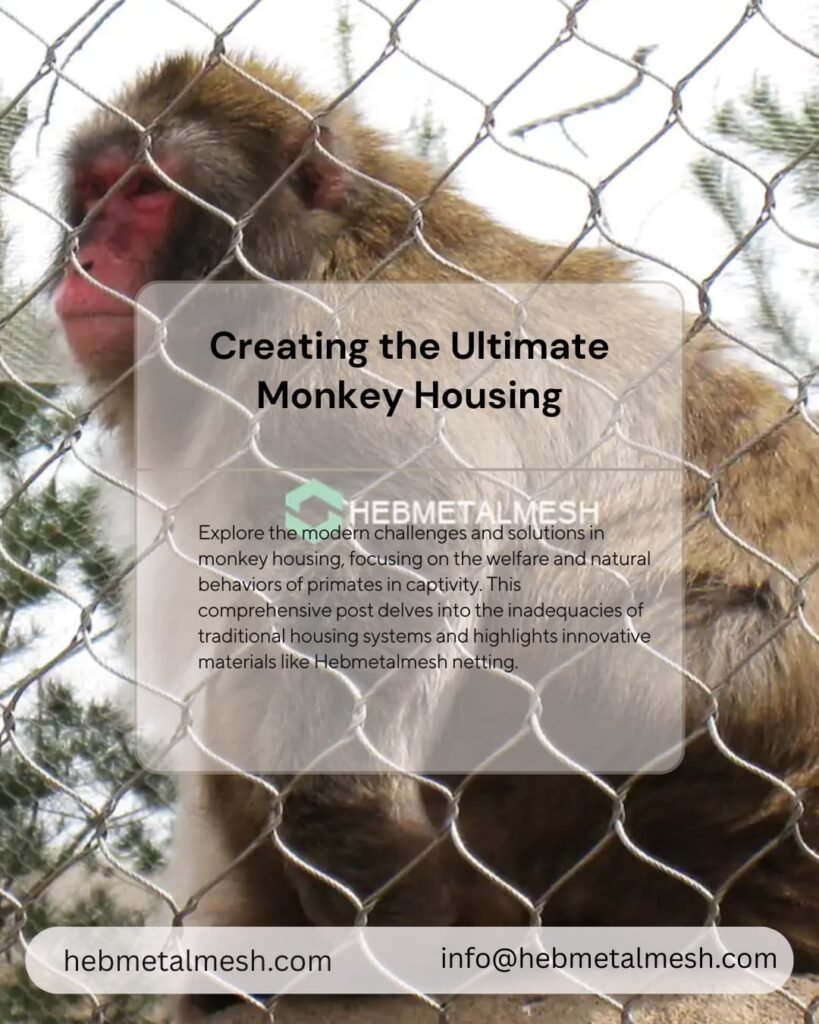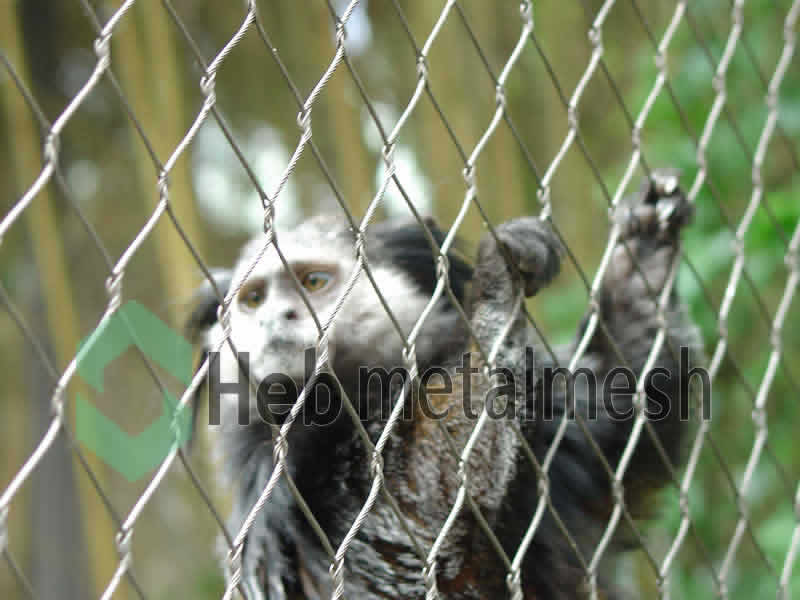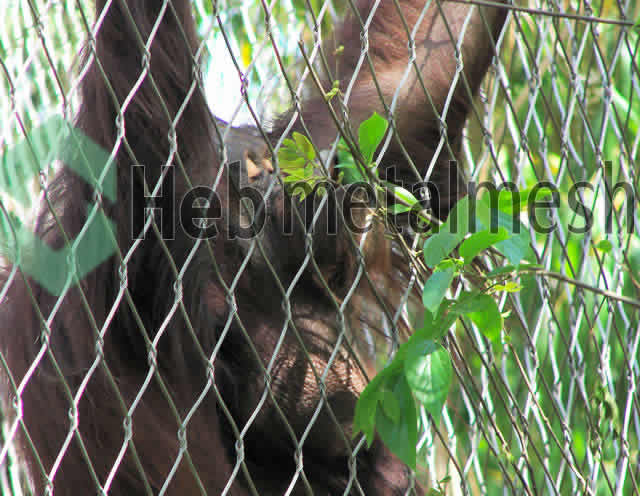Introduction to Modern Monkey Housing Challenges
In recent years, the field of primate care has undergone significant scrutiny, reflecting a growing concern for the welfare of monkeys in captivity. Traditional monkey housing has often been inadequate, leading to a range of behavioral and ethical issues. One prevalent challenge associated with conventional monkey housing is the emergence of stereotypic behaviors. These repetitive, purposeless actions often stem from an environment that fails to meet the physical and psychological needs of monkeys, resulting in frustration and stress. Stereotypic behaviors not only indicate poor welfare but also raise questions about the effectiveness of current housing practices.
Furthermore, the public perception of caged animals has shifted dramatically, highlighting the need for more humane standards in animal care. Many individuals now view traditional cages as outdated and inadequate for fostering the natural behaviors of primates. This change in perspective urges caretakers, researchers, and policymakers to reconsider the design and implementation of monkey housing, advocating for settings that allow for enrichment and social interaction.
Another critical challenge is the high maintenance costs associated with conventional cages. The traditional setups, often designed with steel bars and small enclosures, require substantial investment for upkeep, repairs, and hygienic maintenance. These financial burdens can divert resources away from essential programs aimed at improving the animals’ quality of life. Consequently, the limitations of traditional monkey housing not only affect the animals’ welfare but also place financial strains on the institutions that manage them.
Addressing these challenges is crucial for the future of primate care. As we delve deeper into innovations in monkey housing, including the use of materials like Hebmetalmesh netting, we aim to create improved environments that prioritize the well-being and natural behaviors of monkeys, offering them enriched habitats that promote psychological and physical health.
The Central Question: Designing a Better Habitat
As we delve into the complexities of monkey housing, a fundamental question arises: how can habitats be constructed to ensure security, foster natural behaviors, and provide a visitor-friendly environment? The design of such enclosures is paramount, not only from an animal welfare perspective but also in reflecting a commitment to sustainable practices and visitor engagement. Modern approaches to monkey housing must prioritize the well-being of these intelligent creatures while simultaneously providing opportunities for guests to observe and learn.
One essential element in designing effective monkey habitats is creating environments that allow for naturalistic behavior. This means incorporating features that mimic the creatures’ wild settings, such as climbing structures, varied terrains, and opportunities for social interaction. By facilitating this when constructing monkey housing, we can help maintain the physical and psychological health of the primates, facilitating activities such as climbing, foraging, and socializing, which are vital for their overall well-being.
In addition, the aesthetic and functional aspects of monkey housing require careful consideration. Enclosures should be designed to be visually appealing while ensuring the safety of both the animals and the visitors. This dual focus allows facilities to serve as both sanctuaries for the animals and educational hubs for the public. Utilizing materials such as Hebmetalmesh netting can enhance visibility and safety, providing a barrier that keeps the primates secure without hindering the viewing experience.
Furthermore, the ease of management in these habitats is crucial, as it impacts the welfare of the animals and the operational efficiency of the facility. Streamlined designs that facilitate cleaning, maintenance, and observation will minimize stress for both the primates and the caretakers. Through thoughtful design principles and innovative materials, we can revolutionize monkey housing to create enriched habitats that address the needs of animals and visitors alike.
Introducing Hebmetalmesh Handwoven Stainless Steel Netting
In the realm of monkey housing, the choice of materials plays a critical role in ensuring the safety, health, and comfort of these intelligent primates. Hebmetalmesh has emerged as a pioneering solution in this regard, offering a unique form of handwoven stainless steel netting. This innovative product has been specifically designed to address the various challenges associated with constructing secure and spacious enclosures for monkeys.
The handwoven nature of Hebmetalmesh provides a level of flexibility that is not commonly found in traditional materials. This flexibility allows for easy customization of enclosures, enabling caretakers to create spaces that are not only secure but also tailored to the specific needs of the monkeys. The netting is crafted using high-quality stainless steel, which ensures longevity and durability, making it resistant to wear and tear over time. This durability is particularly advantageous for outdoor environments, where exposure to elements can diminish other materials quickly.
One of the standout features of Hebmetalmesh is its impressive strength. This netting is capable of withstanding significant tension and stress, ensuring that monkeys cannot escape or damage the habitat. Such robust construction is essential for the welfare of the animals, preventing accidents or potential harm. Furthermore, the spacious appearance of monkey housing constructed with Hebmetalmesh fosters a sense of freedom for the inhabitants, which can lead to healthier behavioral patterns and improved overall well-being.
Incorporating Hebmetalmesh into monkey housing designs contributes not only to the physical security of the enclosures but also to the enrichment of the animals’ living conditions. This favorable combination of safety and spaciousness is crucial for the development and happiness of monkeys in captivity, highlighting the importance of innovative materials in the construction of their habitats.
Safety and Security: A Core Benefit of Hebmetalmesh
When designing effective monkey housing, safety and security are paramount. One of the standout materials for achieving these critical elements is Hebmetalmesh netting. This innovative netting provides a robust solution to prevent escapes, thereby ensuring the well-being of the primates. Unlike traditional enclosures, which may weaken over time, Hebmetalmesh boasts exceptional durability, offering a strong barrier against potential breaches. The inherent strength of the netting is crucial, especially in environments where heightened security is vital for both animals and visitors.
In a zoological or wildlife park setting, the presence of sturdy, resilient materials such as Hebmetalmesh can greatly enhance the safety of monkey housing. It effectively deters escape attempts by primates, which can lead to hazardous situations, including injuries to the animals or risks to park visitors. Moreover, the mesh’s design is such that it prevents the animal from clinging or grabbing onto materials that might allow them to leverage an escape, thereby maintaining a secure environment.
Furthermore, the visibility provided by Hebmetalmesh is advantageous, allowing for easy monitoring of the monkeys without obstructive barriers. Caregivers and visitors can observe the animals’ interactions and behaviors, which is essential for both enrichment and engagement. This transparency not only fosters a connection between the viewers and the primates but also ensures that the animals are safeguarded under vigilant supervision.
In light of these factors, integrating Hebmetalmesh netting into monkey housing designs redefines safety standards in animal captivity. This material not only serves its primary function of security but also complements the overall well-being of primates, enhancing their habitat while ensuring public safety is maintained to the highest degree.
Promoting Natural Behaviors: Enriching Monkey Environments
The design of monkey housing plays a crucial role in fostering natural behaviors and social interactions among these intelligent primates. Given their complex social structures and need for stimulation, enclosures that prioritize environmental enrichment are essential. Hebmetalmesh netting facilitates this by allowing a greater degree of interaction within expansive habitats, which is vital for the psychological well-being of monkeys.
One of the primary benefits of utilizing Hebmetalmesh netting in monkey housing is the increase in available space. This type of netting can create multi-dimensional habitats, enabling monkeys to climb, swing, and explore in ways that mimic their natural behaviors in the wild. It is well-documented that when monkeys are provided with the opportunity to engage in activities such as climbing and foraging, their overall mental and emotional states are significantly enhanced. The mesh design ensures optimal airflow and visibility while maintaining safety, allowing monkeys to interact with their surroundings more freely.
Furthermore, promoting social interactions among monkeys is critical to their development. In environments that mimic their natural habitats, monkeys can establish social hierarchies and engage in grooming behaviors, which are essential for building bonds within groups. These interactions contribute positively to the animals’ mental health and reduce stress levels often associated with confinement. In contrast, standard cages with limited space can lead to behavioral issues, such as aggression and anxiety, hampering the psychological and physical health of the monkeys.
In essence, the implementation of Hebmetalmesh netting in monkey housing not only creates safer habitats but also promotes behaviors that are critical for socialization and overall well-being. By prioritizing spacious and enriched environments, we can support the natural instincts of these primates and contribute to their welfare.
Cost-Effectiveness and Maintenance: An Economic Advantage
The choice of materials for monkey housing is crucial, not only for the safety and well-being of the animals but also for economic considerations. In recent years, Hebmetalmesh has emerged as a compelling alternative to traditional housing solutions. Its unique characteristics contribute to significant cost savings in both initial investment and ongoing maintenance expenses.
One of the primary benefits of Hebmetalmesh in monkey housing is its durability. Unlike conventional materials that may require frequent replacements due to wear and tear, Hebmetalmesh is engineered to withstand harsh environmental conditions. With its resistance to weather, corrosion, and physical damage, Hebmetalmesh provides a reliable long-term solution, reducing the necessity for costly repairs or replacements, which can burden zoo and wildlife park budgets.
Furthermore, the maintenance of Hebmetalmesh installations is generally less demanding than that of traditional materials. The smooth surface of Hebmetalmesh allows for easier cleaning, which not only saves labor costs but also helps maintain higher hygiene standards. Less time spent on upkeep translates to more efficient use of staff resources, allowing facilities to allocate personnel towards other vital aspects of animal care and visitor engagement.
Additionally, when considering the initial costs in the context of long-term investments, the economic advantage of integrating Hebmetalmesh becomes evident. While the upfront cost may be slightly higher than conventional materials, the longevity and reduced maintenance needs lead to considerable savings over time. This cost-effectiveness makes Hebmetalmesh an attractive option for facilities committed to providing optimal living conditions for monkeys while maintaining responsible financial management.
In conclusion, the adoption of Hebmetalmesh for monkey housing presents a strategic economic advantage, characterized by its durability and reduced maintenance costs. As zoos and wildlife parks seek sustainable solutions, opting for Hebmetalmesh aligns both the welfare of the animals and the fiscal health of the organization.
Visitor Experience: Creating Engaging Displays
Enhancing visitor experience in environments housing primates is essential for promoting education and awareness about these fascinating creatures. The utilization of Hebmetalmesh in monkey housing serves not only to better the welfare of the animals but also to create engaging and interactive displays for visitors. This innovative material allows for improved visibility, enabling guests to observe primates in their habitats without the obstruction of traditional barriers.
Hebmetalmesh is designed to offer both safety and a sense of openness. Its unique structure provides an unobtrusive view, allowing visitors to appreciate the social and behavioral dynamics of monkeys in real time. This immersive experience can foster a deeper understanding of the animals and highlight the importance of conservation efforts. Moreover, by permitting closer and unobstructed viewing, the material reinforces the connection between human observers and these social mammals, bridging the gap between animal welfare and public engagement.
Furthermore, the flexibility and durability of Hebmetalmesh make it an ideal choice for outdoor enclosures. It can withstand various environmental factors, ensuring that the habitat remains secure and accessible. This adaptability allows for diverse configurations, catering to the specific needs of different species while maintaining an enriched environment that encourages natural behaviors.
Visitor interactions can also be enhanced through the strategic placement of information panels and viewing areas, paired with the use of Hebmetalmesh. This not only provides educational content but also encourages active participation from visitors, allowing them to engage in meaningful conversations about primate conservation. As guests witness the monkeys’ playful and social behaviors through this innovative netting, they are more likely to leave with a greater appreciation for the species and an increased awareness of the conservation challenges they face.
In conclusion, the incorporation of Hebmetalmesh in monkey housing significantly elevates the visitor experience. By enhancing visibility and interaction, it nurtures a profound bond between the public and primates while underscoring the importance of ethical animal care and welfare.
Real-World Applications: Case Studies and Success Stories
The integration of Hebmetalmesh netting in monkey housing has led to significant improvements in animal welfare and visitor experiences across various institutions. One notable case study comes from the San Diego Zoo, which recently revamped its primate enclosures using this innovative material. The use of Hebmetalmesh has provided an open-air environment that mimics the natural habitat of several monkey species. As a result, the monkeys display reduced stress behaviors and increased activity levels, allowing them to engage in natural behaviors that enhance their overall quality of life. Moreover, the transparency of the mesh allows visitors to observe these thrilling interactions up close, fostering a deeper appreciation for wildlife.
Another successful implementation can be seen at the National Zoo in Washington, D.C., where Hebmetalmesh was incorporated into their Red-tailed Monkey habitat. This initiative aimed to enhance not only the animals’ living conditions but also educational outreach efforts. The new netting design allows for better viewing angles, enabling visitors to gain insights into the species’ social dynamics and activity patterns. Post-implementation surveys indicated a marked increase in visitor engagement and satisfaction, suggesting that improved monkey housing significantly enriches the educational potential of the zoo.
Furthermore, wildlife rehabilitation centers have also reported positive outcomes from adopting Hebmetalmesh. The Center for Great Apes in Florida utilized this material in their temporary housing facilities for injured or orphaned monkeys. The durable and secure nature of the netting creates a safe haven while providing adequate ventilation and space for recovery. Both staff and wildlife experts observed that animals recovering in these enriched environments exhibited quicker rehabilitative progress, ultimately leading to higher success rates in reintroduction programs. These case studies underscore the versatile applications of Hebmetalmesh in monkey housing, illustrating the dual benefits for both the animals and the public.
Conclusion: The Future of Monkey Housing
The evolution of monkey housing has seen significant advancements, particularly with the incorporation of innovative materials such as Hebmetalmesh netting. This state-of-the-art solution offers a multitude of benefits that not only enhance the living conditions for primates but also ensure their safety and well-being. One of the primary advantages of Hebmetalmesh is its inherent durability, providing an effective barrier against potential hazards while still promoting an open environment.
Furthermore, the breathable nature of Hebmetalmesh netting facilitates improved airflow within these habitats, a critical factor for the overall health of the housed monkeys. This feature is particularly vital in climates that may otherwise pose a risk of overheating or discomfort for the primates. In addition, the transparent quality of the netting allows for natural light to penetrate the space, creating a more engaging and visually appealing enclosure for the animals.
The flexible design options associated with Hebmetalmesh enable wildlife park designers and conservation specialists to create customized monkey housing solutions that cater to the specific needs of various species. These adaptable structures can incorporate climbing features, foraging areas, and social spaces, thus promoting natural behaviors and engagement among the housed monkeys. Given the well-documented benefits to animal welfare and enrichment, it is imperative for zoo managers and wildlife park designers to adopt this gold-standard solution.
In conclusion, the future of monkey housing lies in the commitment to using advanced materials like Hebmetalmesh netting. By prioritizing the health, safety, and enrichment of primates, stakeholders can foster environments that not only protect the animals but also contribute to the broader goals of conservation and education. Embracing these modern approaches will undoubtedly lead to the establishment of exemplary habitats for monkeys worldwide.
FAQs
A1: Stainless steel provides unmatched strength and chew-resistance, essential for creating secure and long-lasting stainless steel mesh for monkey enclosures that can withstand rigorous use.
A2: Yes, Hebmetalmesh specialize in custom-designed monkey housing panels made to your exact specifications, ensuring a perfect fit for any new construction or renovation project.
A3: Absolutely. Our smooth, rigid mesh prevents injury, making it a safe and durable climbing mesh for monkey habitats, suitable for species from small marmosets to larger primates.
A4: Excellently. Its high corrosion resistance makes it ideal as weatherproof stainless steel mesh for outdoor monkey housing, capable of enduring sun, rain, and humidity.
A5: The black oxide monkey cage mesh offers a reduced-glare surface for animal comfort and a more naturalistic aesthetic, while maintaining the same durability as the standard finish.


